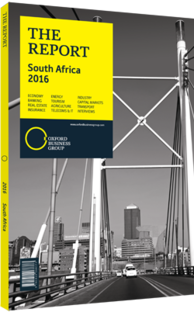Norman Mbazima, CEO, Kumba Iron Ore: Interview

Interview: Norman Mbazima
What factors are driving the iron ore industry?
NORMAN MBAZIMA: The iron ore industry is experiencing its toughest period in some time. Prior to 2014, when prices started plummeting, it was performing quite well. Now, everyone in the industry is scrambling to reduce their cost per tonne and stay afloat.
The seaborne iron ore market constitutes about 1.3bn tonnes, of which 1.1bn is produced by only four major companies, meaning the industry is quite consolidated. These companies have been investing heavily in mines and infrastructure over the past few years, and the subsequent increase in output is now hitting the market. Unfortunately, this is happening at a time when Chinese demand for commodities has dropped and their economy is shifting from investment-led growth to consumption-led growth. This means less demand for raw materials such as iron ore, which is feedstock for steel. Also, the dumping of steel on the international market has led to a sharp reaction in iron ore prices. While many expected the price drop, no one imagined the speed and extent of it. Subsequently, we are all scrambling to reset our operations to remain productive and profitable.
Up to now, Chinese demand constituted over 1bn of the 1.3bn-tonne seaborne iron ore market. This will be hard to make up for. Before China’s infrastructure boom, seaborne sales weren’t as big as they are now because operations were carried out in close proximity to the site of raw materials and steel facilities.
We are expecting to see infrastructure developments in India and Africa, but not on the same scale as China. While Africa is set for great infrastructure development going forward, the timing of such projects is uncertain. There is also a lack of population density which steel intensity requires.
For now we will continue to rely on China to drive demand. We expect prices to remain at current levels for 3-4 years, and then to recover modestly in the long term. While further consolidation of the top four producers is unlikely, we expect to see general consolidation as smaller operations go out of business.
How are mining companies in South Africa managing and offsetting input-cost pressures?
MBAZIMA: There is a drive for greater efficiency across the board in operations, employee and equipment productivity, and supplier rates. Compared to other minerals, iron ore production is sufficiently mechanised, but it is possible to improve truck utilisation and to reduce labour-intensive practices. Improvements can also be made to transport infrastructure. Currently, all iron ore goes through the Saldanha port facility, which is owned by Transnet. We would like to see a coordinated capacity expansion of the railway and the port itself going forward.
What factors are influencing how capital is allocated in the mining sector?
MBAZIMA: It comes down to the types of minerals being mined. Sectors which mine deep underground, such as gold and platinum, will present different challenges than iron ore does. For example, power and labour account for over 50% of costs in gold and platinum mining, compared to 25% in the iron ore sector. All stakeholders, from the government to local communities, must support the industry through these difficult times. Regulation is a key element of this.
What potential is there for the industry to evolve?
MBAZIMA: We are encouraged by technological developments and the levels of engagement with all our stakeholders, which promise to transform the mining industry. However, emerging companies will need assistance if they are to fill any voids left by multinational companies. Mining is very capital-intensive: iron ore, for example, incurs high drilling and exploration costs. The industry is in need of assistance, and the entire mining chain should be closely examined.
You have reached the limit of premium articles you can view for free.
Choose from the options below to purchase print or digital editions of our Reports. You can also purchase a website subscription giving you unlimited access to all of our Reports online for 12 months.
If you have already purchased this Report or have a website subscription, please login to continue.

